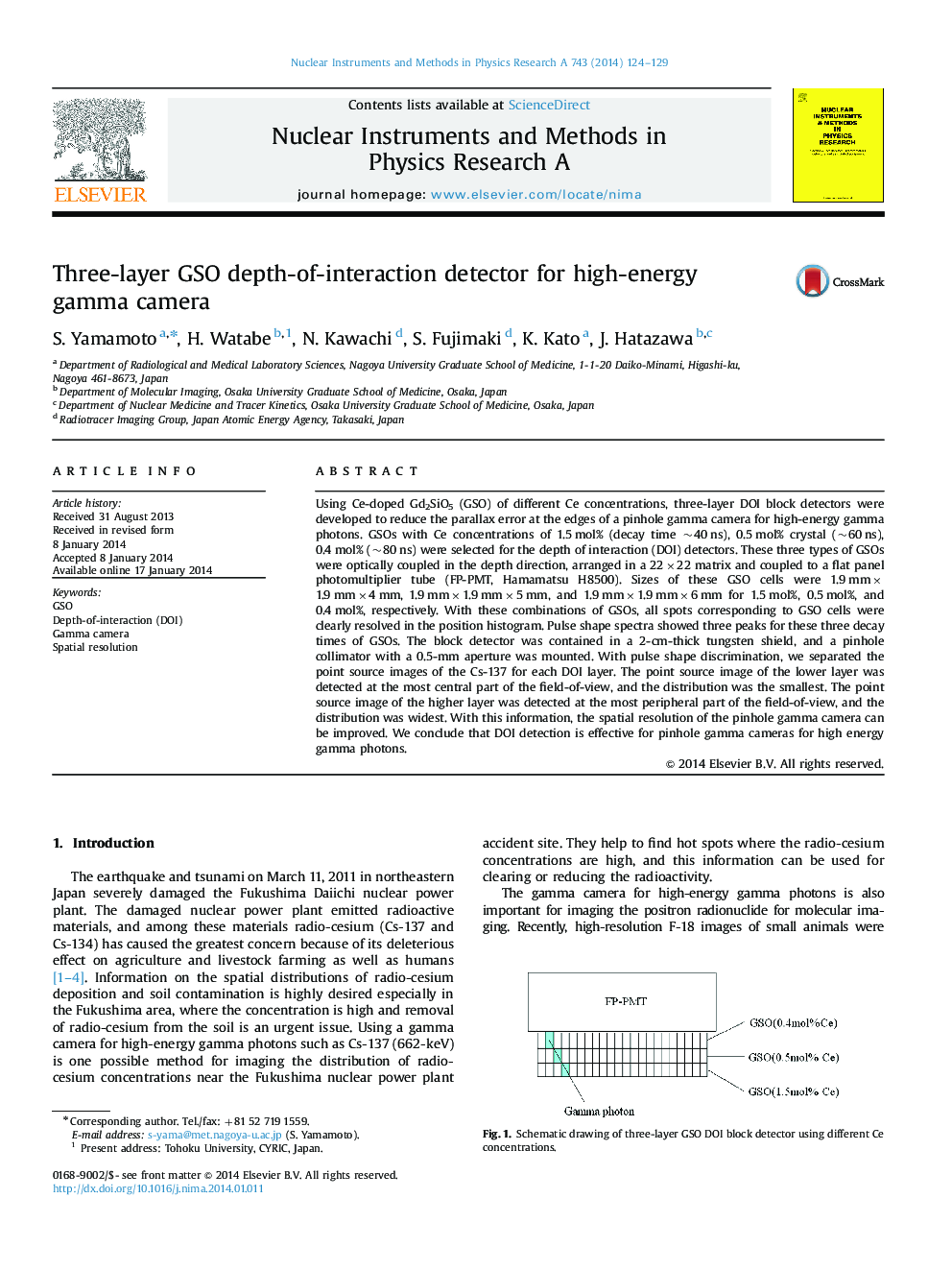| Article ID | Journal | Published Year | Pages | File Type |
|---|---|---|---|---|
| 8176825 | Nuclear Instruments and Methods in Physics Research Section A: Accelerators, Spectrometers, Detectors and Associated Equipment | 2014 | 6 Pages |
Abstract
Using Ce-doped Gd2SiO5 (GSO) of different Ce concentrations, three-layer DOI block detectors were developed to reduce the parallax error at the edges of a pinhole gamma camera for high-energy gamma photons. GSOs with Ce concentrations of 1.5Â mol% (decay time ~40Â ns), 0.5Â mol% crystal (~60Â ns), 0.4Â mol% (~80Â ns) were selected for the depth of interaction (DOI) detectors. These three types of GSOs were optically coupled in the depth direction, arranged in a 22Ã22 matrix and coupled to a flat panel photomultiplier tube (FP-PMT, Hamamatsu H8500). Sizes of these GSO cells were 1.9Â mmÃ1.9Â mmÃ4Â mm, 1.9Â mmÃ1.9Â mmÃ5Â mm, and 1.9Â mmÃ1.9Â mmÃ6Â mm for 1.5Â mol%, 0.5Â mol%, and 0.4Â mol%, respectively. With these combinations of GSOs, all spots corresponding to GSO cells were clearly resolved in the position histogram. Pulse shape spectra showed three peaks for these three decay times of GSOs. The block detector was contained in a 2-cm-thick tungsten shield, and a pinhole collimator with a 0.5-mm aperture was mounted. With pulse shape discrimination, we separated the point source images of the Cs-137 for each DOI layer. The point source image of the lower layer was detected at the most central part of the field-of-view, and the distribution was the smallest. The point source image of the higher layer was detected at the most peripheral part of the field-of-view, and the distribution was widest. With this information, the spatial resolution of the pinhole gamma camera can be improved. We conclude that DOI detection is effective for pinhole gamma cameras for high energy gamma photons.
Related Topics
Physical Sciences and Engineering
Physics and Astronomy
Instrumentation
Authors
S. Yamamoto, H. Watabe, N. Kawachi, S. Fujimaki, K. Kato, J. Hatazawa,
